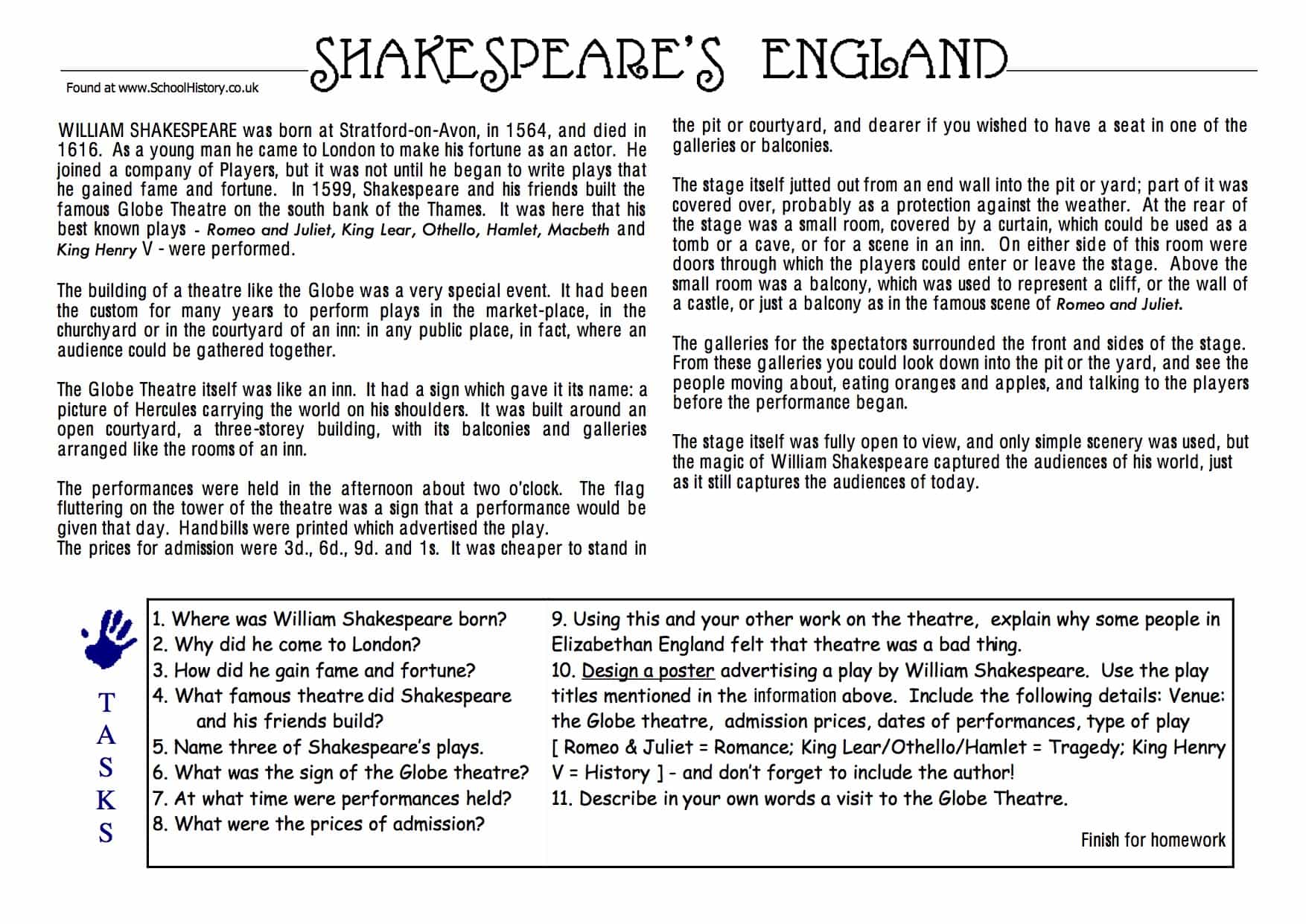Download Shakespeare’s England
Click the button below to download this worksheet for use in the classroom or at home.
Download →
Facts PDF Worksheet:
-
- Aimed at Students studying at UK Year 8 or equivalent
- Free to download
- Use as you wish in the classroom or home environment
- Structured study guide and challenging questions.
WILLIAM SHAKESPEARE was born at Stratford-on-Avon, in 1564, and died in 1616. As a young man he came to London to make his fortune as an actor. He joined a company of Players, but it was not until he began to write plays that he gained fame and fortune. In 1599, Shakespeare and his friends built the famous Globe Theatre on the south bank of the Thames. It was here that his best known plays – Romeo and Juliet, King Lear, Othello, Hamlet, Macbeth and King Henry V – were performed.
The building of a theatre like the Globe was a very special event. It had been the custom for many years to perform plays in the market-place, in the churchyard or in the courtyard of an inn: in any public place, in fact, where an audience could be gathered together.
The Globe Theatre itself was like an inn. It had a sign which gave it its name: a picture of Hercules carrying the world on his shoulders. It was built around an open courtyard, a three-storey building, with its balconies and galleries arranged like the rooms of an inn.
The performances were held in the afternoon about two o’clock. The flag fluttering on the tower of the theatre was a sign that a performance would be given that day. Handbills were printed which advertised the play.
The prices for admission were 3d., 6d., 9d. and 1s. It was cheaper to stand in the pit or courtyard, and dearer if you wished to have a seat in one of the galleries or balconies.
The stage itself jutted out from an end wall into the pit or yard; part of it was covered over, probably as a protection against the weather. At the rear of the stage was a small room, covered by a curtain, which could be used as a tomb or a cave, or for a scene in an inn. On either side of this room were doors through which the players could enter or leave the stage. Above the small room was a balcony, which was used to represent a cliff, or the wall of a castle, or just a balcony as in the famous scene of Romeo and Juliet.
The galleries for the spectators surrounded the front and sides of the stage. From these galleries you could look down into the pit or the yard, and see the people moving about, eating oranges and apples, and talking to the players before the performance began.
The stage itself was fully open to view, and only simple scenery was used, but the magic of William Shakespeare captured the audiences of his world, just as it still captures the audiences of today.
